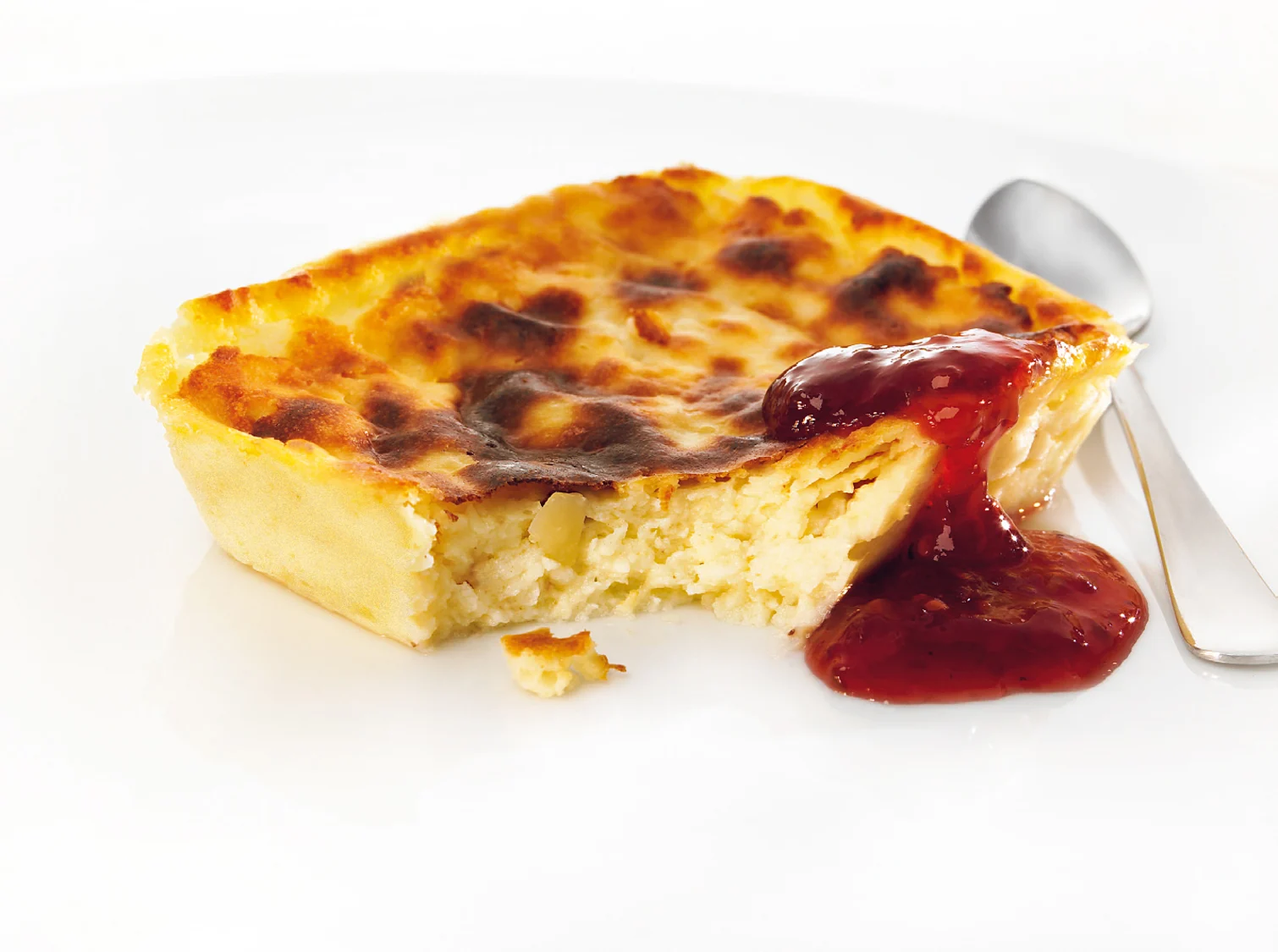
Ostkaka
Traditional Swedish cheesecake made with rennet, served with jam and whipped cream.
Ingredients
- •Milk
- •Rennet
- •Flour
- •Eggs
- •Cream
- •Almonds
- •Sugar
- •Vanilla
- •Bitter almond
Instructions
Curdle Milk
Heat milk and add rennet to form curds
Strain
Separate curds from whey
Mix
Combine curds with other ingredients
Bake
Bake until set and golden
Ostkaka, which literally translates to "cheese cake" in Swedish, is a traditional Swedish dessert that bears little resemblance to the American-style cheesecake. This unique delicacy has a distinctive texture that's somewhere between a custard and a cheesecake, with a subtle sweetness and rich, complex flavor profile.
Dating back to the Middle Ages, ostkaka holds a special place in Swedish culinary heritage, particularly in the region of Småland where it originated. So beloved is this dessert that it even has its own day of celebration - November 14th is officially Swedish Ostkaka Day!
The traditional preparation method is quite labor-intensive and requires specific ingredients, particularly rennet, which helps form the crucial curd base. Fresh milk is heated and curdled with rennet, then the curds are separated from the whey. These curds are then mixed with cream, eggs, sugar, and almonds (both regular and bitter almonds for that distinctive flavor). The mixture is baked until it achieves a light golden color and a perfectly set consistency.
While the traditional recipe remains popular, modern variations might include different nuts or flavorings. Some families add vanilla, cardamom, or even citrus zest to create their own unique versions. However, purists, especially in Småland, stick strictly to the traditional recipe.
In Sweden, ostkaka is typically served lukewarm or cold, accompanied by whipped cream and jam - cloudberry or strawberry jam being particularly popular choices. It's often enjoyed during fika (the Swedish coffee break tradition) or as a dessert after dinner. Some people even eat it for breakfast!
From a nutritional standpoint, ostkaka is relatively high in protein thanks to its milk and egg content. A typical serving (100g) contains approximately 220-250 calories. The dessert contains gluten-free ingredients, though those with nut allergies should be cautious due to the almonds. The bitter almonds used in traditional recipes contain small amounts of cyanide-producing compounds when raw, but these are safe in the small quantities used and after cooking. For those watching their sugar intake, the dessert can be made with reduced sugar, though this will affect its traditional taste.
